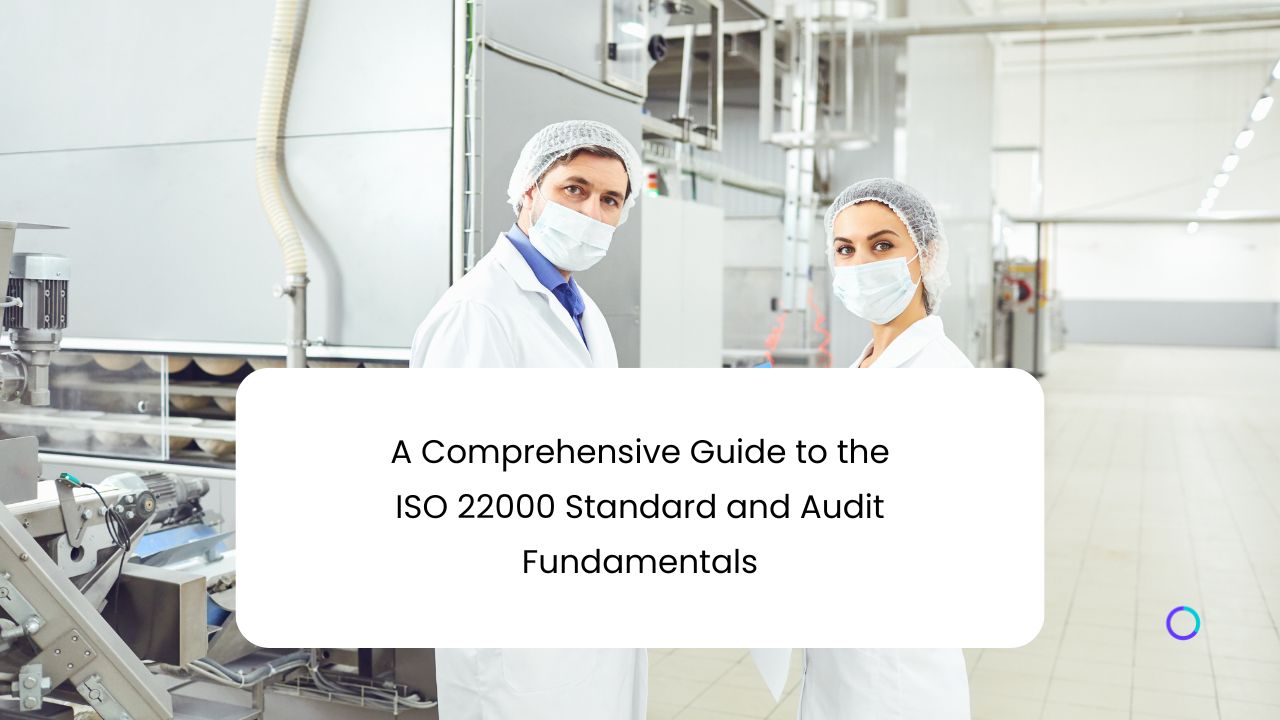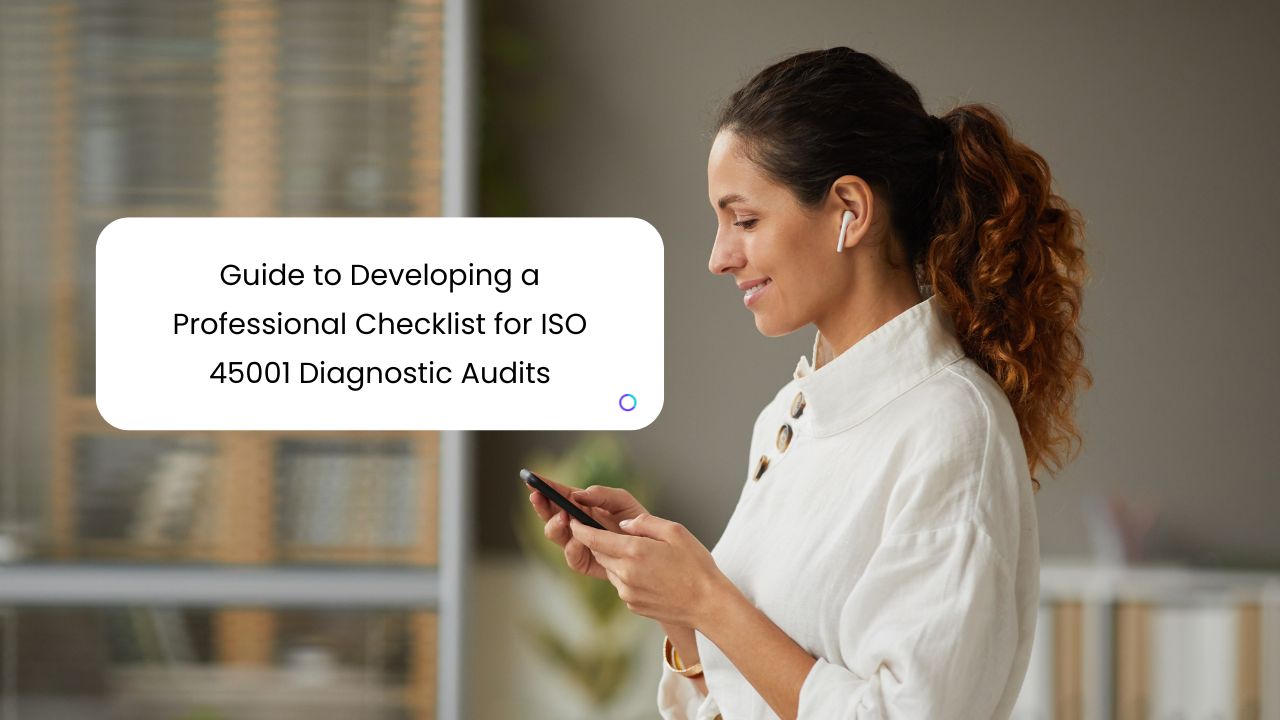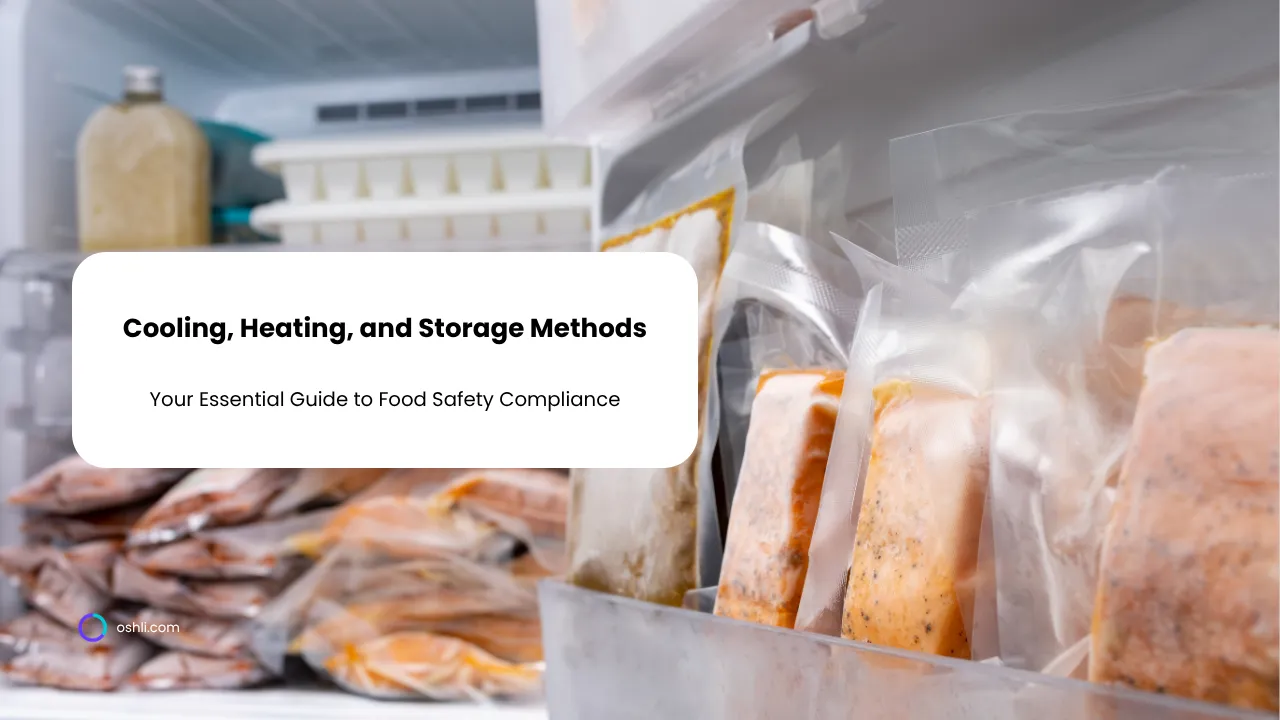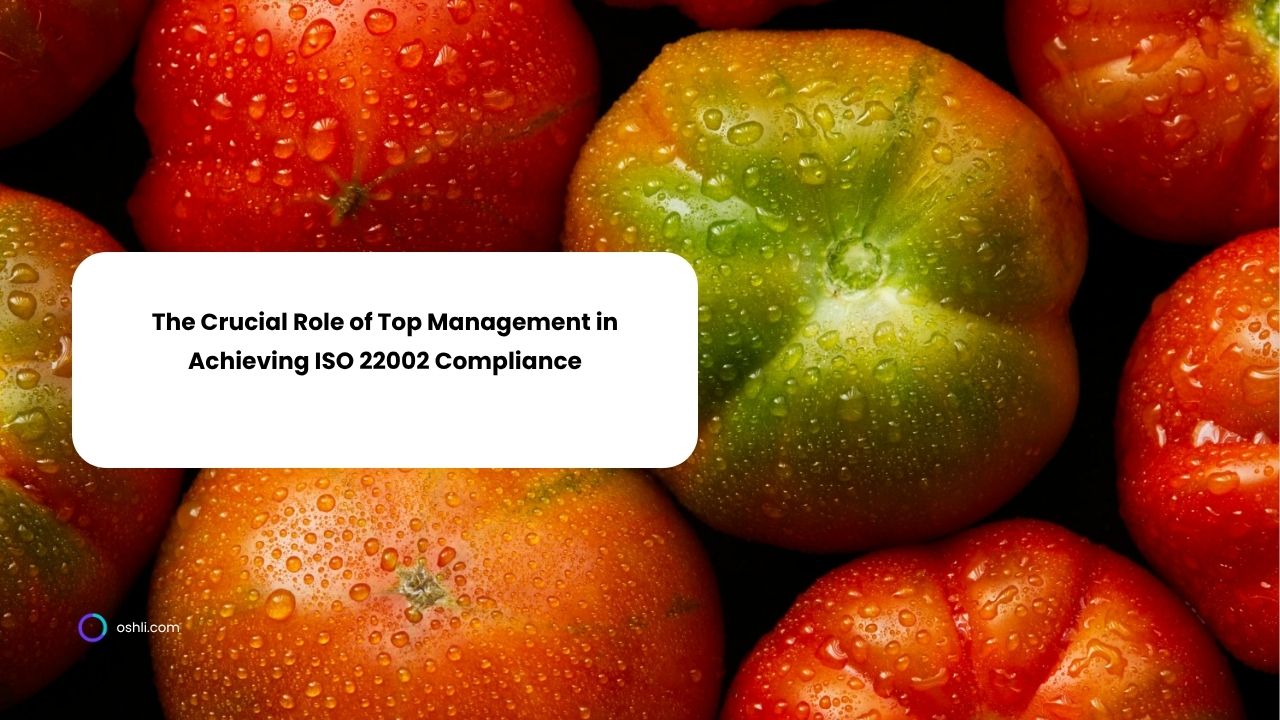
A Guide to the ISO 22000 Standard and Audit Fundamentals
Table of Contents
- Introduction
- Clause 4: Context of the Organization
- Clause 5: Leadership
- Clause 6: Planning
- Clause 7: Support
- Clause 8: Operation
- Clause 9: Performance Evaluation
- Clause 10: Improvement
- Audit Fundamentals
- 9.1 Document Review
- 9.2 Interviews
- 9.3 Physical Observation
- 9.4 Testing and Sampling
- 9.5 Data Analysis
- 9.6 Evidence Gathering Tools
- 9.7 Internal vs External Audit
- 9.8 Internal Audit
- Conclusion
Introduction
In the modern food industry, maintaining a robust Food Safety Management System (FSMS) is non-negotiable. Organizations face increasing demands from consumers, regulators, and stakeholders to ensure that the food they produce is safe and of high quality. Among the most recognized frameworks for achieving these objectives is the ISO 22000 standard, which integrates food safety principles with a structured management system approach. By implementing ISO 22000, organizations can enhance consumer confidence, reduce food safety incidents, and streamline operational processes.
However, simply having an FSMS is not enough. Organizations must also understand the audit fundamentals that verify whether the system is effective, compliant, and continuously improving. Audits—whether internal or external—involve reviewing documentation, interviewing personnel, and conducting on-site observations to gather evidence of conformity with the standard.
This article provides a detailed overview of the ISO 22000 standard—covering Clauses 4 through 10—and then delves into audit fundamentals, including document review, interviews, physical observation, testing and sampling, data analysis, evidence gathering tools, and the distinction between internal and external audits. By the end, you will have a clear roadmap for developing, maintaining, and verifying a food safety management system that meets international best practices.
Clause 4: Context of the Organization
4.1 Understanding the Organization and Its Context
Clause 4 of ISO 22000 sets the foundation for the entire FSMS by requiring organizations to understand both the internal and external factors that can affect their ability to deliver safe food. This involves:
- Identifying trends or issues in the food industry (e.g., new regulations, emerging pathogens).
- Recognizing economic, social, and cultural influences on consumer demands.
- Evaluating technological changes (e.g., automation, new processing methods) that could alter operational risks.
By systematically analyzing these factors, organizations can align their FSMS with their strategic direction, ensuring it remains relevant and robust.
4.2 Understanding the Needs and Expectations of Interested Parties
Organizations must also identify and understand the interested parties—from consumers and suppliers to regulatory authorities and NGOs. Each stakeholder group has its own expectations regarding food safety, quality, sustainability, or traceability. ISO 22000 urges organizations to:
- Determine which stakeholders have the most significant influence on or are most affected by the organization’s activities.
- Map specific requirements (e.g., labeling, allergen control, ethical sourcing) to the FSMS processes.
4.3 Determining the Scope of the FSMS
The scope clearly delineates what products, processes, and locations the FSMS covers. For example, a company that processes dairy products in multiple facilities may choose to apply ISO 22000 to only one site initially. However, a well-defined scope prevents ambiguity and helps auditors and regulators assess compliance accurately.
4.4 Food Safety Management System (FSMS)
Finally, organizations must establish, implement, maintain, and continually improve their FSMS according to the standard’s requirements. This includes:
- Documenting policies, processes, and procedures that address identified risks.
- Ensuring resources (human, financial, technological) are in place to maintain food safety controls.
Clause 5: Leadership
5.1 Leadership and Commitment
Top management plays a pivotal role in embedding food safety into the organization’s culture. ISO 22000 requires:
- Visible commitment from leadership, ensuring adequate resources and support for the FSMS.
- Integration of food safety objectives into the organizational strategy, rather than treating them as standalone tasks.
5.2 Policy
A food safety policy should be developed, clearly articulating the organization’s intentions and direction. Key elements include:
- Alignment with legal and regulatory requirements.
- A commitment to continuous improvement of the FSMS.
- Approaches to risk-based thinking and preventive actions.
This policy must be communicated to all employees and relevant stakeholders, ensuring consistent understanding and application.
5.3 Organizational Roles, Responsibilities, and Authorities
Clause 5 also outlines the need to define roles and responsibilities within the FSMS. Examples include:
- FSMS Coordinator: Oversees the implementation and maintenance of the FSMS.
- Department Managers: Ensure their teams follow food safety procedures.
- Operators: Perform tasks like CCP monitoring, record-keeping, and immediate reporting of deviations.
By clearly assigning responsibilities, organizations reduce the risk of gaps or overlaps in food safety controls.
Clause 6: Planning
6.1 Actions to Address Risks and Opportunities
ISO 22000 promotes a risk-based approach, urging organizations to:
- Identify hazards (biological, chemical, physical) and evaluate their likelihood and severity.
- Implement control measures to reduce or eliminate identified risks.
- Consider opportunities (e.g., new markets, improved processes) that can arise from effective risk management.
This proactive stance helps prevent food safety incidents before they occur, rather than reacting after the fact.
6.2 Food Safety Objectives and Planning to Achieve Them
Food safety objectives should be:
- SMART: Specific, Measurable, Achievable, Relevant, and Time-bound.
- Aligned with the food safety policy and the organization’s overall strategy.
- Monitored regularly to track progress and ensure continuous improvement.
Examples of objectives might include reducing microbial contamination in a particular product line or cutting the number of customer complaints related to packaging defects.
6.3 Planning of Changes
Organizations evolve over time, whether through introducing new products, expanding facilities, or adopting advanced technologies. Clause 6 requires a structured approach to managing change, ensuring that modifications do not inadvertently introduce new food safety risks. This includes:
- Documenting the nature and scope of the change.
- Assessing potential hazards arising from the change.
- Updating SOPs, training programs, or control measures accordingly.
Clause 7: Support
7.1 Resources
To maintain an effective FSMS, organizations need adequate resources—including:
- Human Resources: Competent staff trained in food safety protocols.
- Infrastructure: Facilities, equipment, utilities, and layout that support hygienic operations.
- Financial Resources: Sufficient budget for equipment maintenance, training, and improvements.
7.2 Competence
Competence goes beyond hiring qualified individuals; it involves continuous training and development. Under ISO 22000, organizations must:
- Identify the skills and knowledge required for each role.
- Provide ongoing training to address skill gaps.
- Evaluate the effectiveness of training (e.g., post-training assessments or improved performance metrics).
7.3 Awareness
Awareness ensures that every employee understands:
- The food safety policy and their role in achieving its objectives.
- The implications of not adhering to procedures, including potential product recalls or legal consequences.
- The importance of reporting deviations or near-misses.
7.4 Communication
Effective internal and external communication is critical. Internally, staff must know about updates to procedures or hazard controls. Externally, organizations should communicate relevant information to suppliers, customers, and regulators, such as:
- Supplier requirements (e.g., raw material specifications).
- Customer notifications (e.g., allergen warnings).
- Regulatory disclosures (e.g., inspection findings).
7.5 Documented Information
ISO 22000 mandates proper document control:
- Documents (e.g., procedures, manuals) must be up to date, accessible, and approved by authorized personnel.
- Records (e.g., temperature logs, cleaning checklists) must be retained for traceability and audit purposes.
Clause 8: Operation
8.1 Operational Planning and Control
Clause 8 forms the operational backbone of ISO 22000, detailing how an organization translates policies and plans into day-to-day practices. Key components include:
- Standard Operating Procedures (SOPs): Step-by-step instructions for tasks like receiving raw materials, processing, packaging, and dispatching.
- Monitoring of critical parameters (e.g., temperature, pH) at defined control points.
8.2 Prerequisite Programs (PRPs)
PRPs are the foundational measures that create a hygienic environment, such as:
- Good Manufacturing Practices (GMPs)
- Good Hygiene Practices (GHPs)
- Pest Control
- Cleaning and Sanitation Schedules
These programs reduce the likelihood of introducing hazards into the production process.
8.3 Hazard Control
At the heart of Clause 8 is the Hazard Analysis:
- Identify Hazards: Biological (bacteria, viruses), chemical (allergens, toxins), and physical (metal fragments).
- Assess Severity and Likelihood: Determine which hazards require stringent control.
- Determine Control Measures: Establish Operational Prerequisite Programs (OPRPs) or Critical Control Points (CCPs) to manage significant hazards.
8.4 Traceability System
A traceability system allows organizations to track raw materials from suppliers through processing to finished products. This is vital for:
- Rapid recalls if a hazard is detected post-production.
- Demonstrating compliance during regulatory or customer audits.
8.5 Emergency Preparedness and Response
Food businesses must have plans for emergencies like contamination events, equipment failures, or natural disasters. Clause 8.5 requires documented procedures for:
- Immediate containment of affected products.
- Communication with stakeholders (e.g., customers, regulators).
- Restoration of normal operations.
8.6 Control of Product and Service Provision
This includes managing outsourced processes, ensuring that suppliers and contractors also meet the organization’s food safety standards. Contracts and purchase agreements often specify quality and safety requirements.
8.7 Control of Nonconforming Outputs
When a deviation occurs (e.g., a batch fails a microbiological test), organizations must have procedures to:
- Isolate and identify nonconforming products.
- Decide on disposition (rework, discard, or release under concession).
- Investigate root causes to prevent recurrence.
Clause 9: Performance Evaluation
9.1 Monitoring, Measurement, Analysis, and Evaluation
Organizations need data to confirm whether the FSMS is effective. This involves:
- Measuring key performance indicators (KPIs), such as frequency of CCP deviations or product returns.
- Analyzing trends over time to spot potential problems or improvements.
9.2 Internal Audit
Regular internal audits check whether processes conform to ISO 22000 requirements and the organization’s own procedures. Auditors must be:
- Independent of the area they are auditing.
- Competent in audit techniques and food safety principles.
9.3 Management Review
Top management should periodically review the FSMS to:
- Evaluate audit results, customer feedback, and non-conformities.
- Assess the continued suitability of the FSMS in light of changing conditions.
- Make strategic decisions on resource allocation or policy revisions.
Clause 10: Improvement
10.1 Nonconformity and Corrective Action
When issues arise, organizations should:
- Identify the nonconformity.
- Take immediate action to control or correct the problem.
- Conduct root cause analysis to prevent future occurrences.
- Implement and review corrective actions for effectiveness.
10.2 Continual Improvement
ISO 22000 is not a static checklist but a dynamic system that evolves over time. Continuous improvement involves:
- Reviewing performance metrics and audit findings.
- Incorporating innovations (e.g., new processing methods, advanced packaging).
- Staying updated with regulatory changes and market trends.
Audit Fundamentals
An audit is a systematic, independent, and documented process for obtaining evidence and evaluating it objectively to determine the extent to which requirements are met. In food safety, audits ensure that the FSMS aligns with ISO 22000 or other relevant standards.
9.1 Document Review
Document review typically precedes the on-site portion of an audit. Auditors examine:
- Policies, procedures, and manuals to verify alignment with ISO 22000 clauses.
- Records (e.g., CCP monitoring logs, training records) for completeness and accuracy.
- Previous audit reports to check if corrective actions were implemented.
A thorough document review provides context and helps auditors focus on critical areas during the site visit.
9.2 Interviews
Auditors conduct interviews to gauge the understanding and competence of personnel:
- Top Management: Assessed on their commitment to food safety policy and resource allocation.
- Supervisors and Operators: Evaluated on their knowledge of SOPs, hazard controls, and incident reporting.
- Support Staff: May be questioned about maintenance schedules, cleaning procedures, or supplier management.
Open-ended questions encourage detailed responses, revealing the practical implementation of documented procedures.
9.3 Physical Observation
During on-site physical observation, auditors:
- Inspect production lines, storage areas, and equipment for compliance with PRPs and CCPs.
- Check personal hygiene practices and protective clothing.
- Observe real-time processes, such as temperature monitoring or product handling.
Physical observation helps identify gaps between what is written in documents and what actually happens on the floor.
9.4 Testing and Sampling
Some audits involve testing and sampling:
- Product Testing: Microbiological or chemical tests to ensure compliance with food safety standards.
- Environmental Swabs: Checking for pathogens on surfaces, especially in high-risk areas.
- Allergen Verification: Confirming that cleaning processes effectively reduce cross-contact with allergens.
Testing results are critical pieces of evidence to confirm the adequacy of hazard controls.
9.5 Data Analysis
Auditors must analyze collected data to form conclusions about FSMS performance:
- Statistical Process Control (SPC): Monitoring trends in critical parameters (e.g., temperature, pH).
- Root Cause Analysis: Identifying underlying issues if repeated non-conformities occur.
- Benchmarking: Comparing performance metrics against industry standards or previous audit cycles.
9.6 Evidence Gathering Tools
Common evidence gathering tools include:
- Checklists: Ensure that auditors cover all relevant clauses or process steps.
- Interview Guides: Standard questions to maintain consistency.
- Cameras and Smartphones: Photographic evidence can document good practices or highlight problem areas.
- Audit Management Software: Facilitates record-keeping, scheduling, and reporting.
9.7 Internal vs External Audit
- Internal Audits: Conducted by the organization’s own trained staff or outsourced to independent consultants. These audits help identify improvement opportunities and ensure ongoing compliance.
- External Audits: Performed by certification bodies or regulatory agencies. External auditors provide an objective assessment and can grant or renew certifications.
9.8 Internal Audit
Within the context of ISO 22000, internal audits are a requirement under Clause 9 (Performance Evaluation). They:
- Verify internal compliance with documented procedures.
- Provide early warnings of potential issues before external audits.
- Encourage a culture of continuous improvement by involving employees in problem-solving.
Internal audits should be scheduled based on risk, focusing on processes with the greatest impact on food safety.
Conclusion
The ISO 22000 standard offers a structured approach to food safety management, guiding organizations through context analysis, leadership commitments, risk-based planning, operational controls, performance evaluation, and continuous improvement. By adhering to Clauses 4 through 10, food businesses can systematically identify hazards, implement effective control measures, and respond proactively to changing market and regulatory conditions.
However, an FSMS is only as strong as the auditing practices that verify its implementation. Audit fundamentals—from document review and interviews to physical observation, testing, sampling, and data analysis—provide the evidence needed to confirm compliance and highlight areas for enhancement. Whether conducted internally or by external certification bodies, audits ensure transparency, accountability, and consistent quality.
Key Takeaways:
- Context Matters: Understanding internal and external factors (Clause 4) is crucial for tailoring the FSMS to real-world conditions.
- Leadership and Planning: Top management’s commitment (Clause 5) and risk-based planning (Clause 6) set the tone for a robust FSMS.
- Support and Operation: Adequate resources, training, and documented procedures (Clauses 7 and 8) underpin day-to-day food safety controls.
- Performance Evaluation: Monitoring KPIs, conducting internal audits, and holding management reviews (Clause 9) drive data-informed decisions.
- Continual Improvement: Nonconformities and root cause analysis (Clause 10) lead to a dynamic system that evolves with industry changes.
- Audit Fundamentals: Thorough audits, whether internal or external, rely on systematic evidence gathering to validate FSMS effectiveness.
By integrating these principles into daily operations and regularly auditing for compliance, organizations can maintain consumer trust, regulatory approval, and a sustainable competitive edge in the global food market.
Join our newsletter!
Enter your email to receive our latest news.
Don't worry, we don't spam
Related Articles

Guide to Developing a Professional Checklist for ISO 45001 Diagnostic Audits
The ISO 45001 standard establishes a framework for Occupational Health and Safety Management Systems (OHSMS), aiming to enhance employee safety, reduce workplace risks, and create safer working conditions. A diagnostic audit aligned with ISO 45001 is a proactive approach that allows organizations to assess current compliance, identify weaknesses, and prioritize improvements. Central to this process is a professionally structured checklist that ensures consistency, accuracy, and depth in audit execution.

Cooling, Heating, and Storage Methods: Your Essential Guide
Discover how to create a cooling, heating, and storage methods template to ensure food safety, meet compliance, and optimize temperature control with free templates.

The Crucial Role of Top Management in Achieving ISO 22002 Compliance
Explore how top management's leadership drives ISO 22002 compliance, ensuring robust food safety management through commitment, policy, and oversight.


